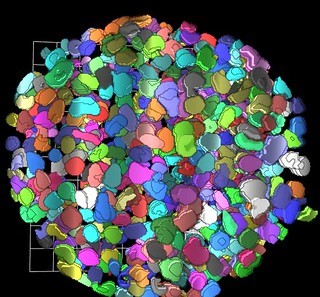NIH HEAL Initiative Expertise and Resources
Contact
We are offering opportunities to apply our state-of-the-art technologies and extensive experience in therapeutic development to ideas and expertise in pain, addiction and overdose through collaboration. Open opportunities for collaboration fall into two general categories: novel human cell–based screening platforms and pharmacological probe development.
Novel Human Cell–Based Testing Platforms
Traditionally, discovery of small molecule probes and drugs has begun with screens in cell-free systems or cell lines with heterologously expressed genes, often of non-human origin. Although these platforms have value, they may identify compounds that do not reflect native human cellular physiology or disease, which have a high likelihood of failure at later stages of the translational process. The advent of induced pluripotent stem cell (iPSC) and 3-D tissue printing technologies offers the opportunity to develop screening platforms that more accurately reflect human disease physiology and will allow the discovery of more robust and ultimately successful probe compounds and drugs for pain, addiction and overdose.
iPSC-Derived Cell-Based Model Development

Investigators with a desire to develop and characterize iPSC-derived cell types relevant to nociception (e.g., primary and associative pain pathways), addiction (e.g., reward pathways) and overdose should apply. Proposals in this space should focus on development, in-depth characterization and rigorous utilization of human iPSC–based assays related to modeling and reversing pain, addiction and opioid overdose. The NCATS Stem Cell Translation Laboratory has specialized expertise in development of robust, reproducible and scalable automated iPSC differentiation protocols and comprehensive cell characterization. Among the lab’s capabilities are:
- Advanced imaging technologies (e.g., high-content confocal, calcium imaging, optogenetics) and data analysis for functional cell characterization, including longitudinal tracking of cell behaviors with multiple measurements over days, weeks or months
- High-throughput electrophysiology methods (e.g., high-density multi-electrode arrays [26,400 electrodes/well]) to streamline monitoring of electrical activity at high spatiotemporal resolution
- Measurement of cell signaling pathways, metabolism and specific targets (e.g., cyclic AMP, PKA activity, CREB phosphorylation, energy metabolism)
- Combined single-cell transcriptomic and proteomic analyses that provide information on drug response in individual cells
- Access to large numbers of iPSC-derived sensory neurons (nociceptors), neuronal subtypes (e.g., GABAergic, glutamatergic, dopaminergic) and astrocytes in chemically defined conditions already extant in the lab
Pharmacological Probe Development
The first step in qualifying a novel molecular target as potentially useful in therapeutic applications is creating a small molecule “probe” compound that can test the therapeutic hypothesis in cell-based or animal model systems.
Pharmacological Probe Development
Investigators who have identified potential pain, addiction or overdose targets can collaborate with this program to generate an optimized probe that will enable the testing of a therapeutic hypothesis. The laboratory encompasses assay development; quantitative high-throughput screening (HTS) to identify promising compounds to modulate novel targets; and optimization by medicinal chemists to optimize potency, selectivity and pharmacokinetic properties required of an in vitro/in vivo pharmacological probe of the novel target. Assays of target activity adaptable for HTS, secondary assays to guide medicinal chemistry optimization and biological validation, and animal efficacy models, when applicable, should be available in the applicant’s laboratory. Probes can also be tested using the iPSC or 3-D bioprinting platforms previously developed by NCATS. Sharing probes with the scientific community will be a priority.
Capabilities include:
- Adaptation/miniaturization of assays for HTS and new assay development
- Large diversity screening chemical libraries and specialty libraries for mechanistic dissection and drug repurposing
- Counterscreening/confirmatory assays, including for common artifactual activities
- Chemical informatics
- Medicinal chemistry
- In vitro ADMET and in vivo DMPK characterization
- HEAL target and compound library on 1,536-well and 384-well plate formats


